Helvella Crispa, also known as the White Saddle or White Elfin Saddle, is a mushroom that has captivated people for centuries. Its unique shape and delicate appearance make it stand out among other fungi, and it has been the subject of many studies. In this article, we will explore the identification, culinary uses, medicinal properties, history, and safety concerns, surrounding the white elfin saddle mushroom.
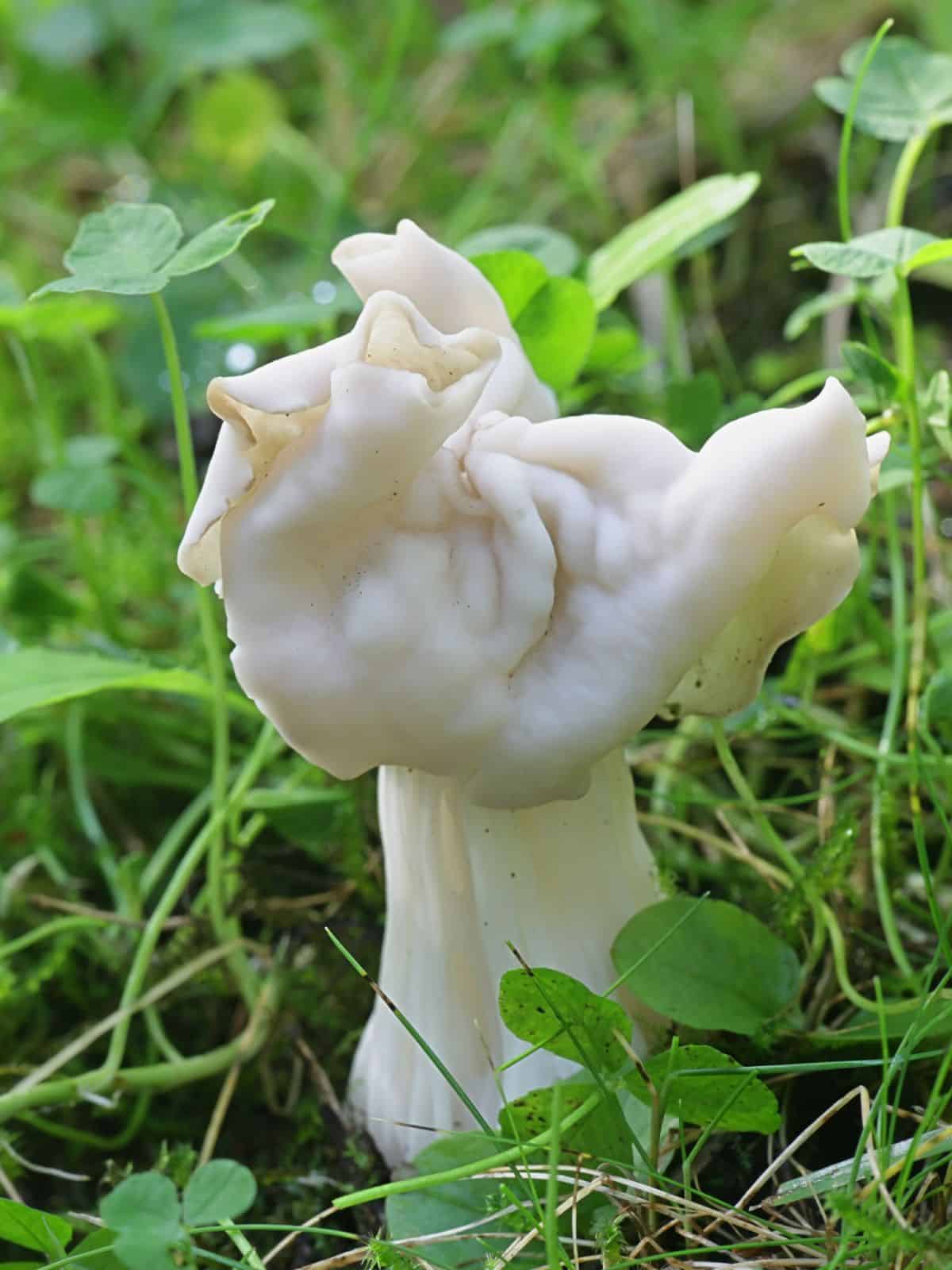
Jump to:
All About White Elfin Saddle
The white elfin saddle is a member of the Helvellaceae family and is found in temperate regions all over the world. It is conspicuous wherever it grows, with its stark whiteness, elaborately fluted stem, and oddly shaped cap.
The white saddle has been featured in art, literature, and music throughout history. In the Middle Ages, it was depicted in many illuminated manuscripts, and it was believed to have magical properties. In modern times, it has been referenced in popular culture, such as in the video game “The Elder Scrolls V: Skyrim,” where it is used as a potion ingredient.
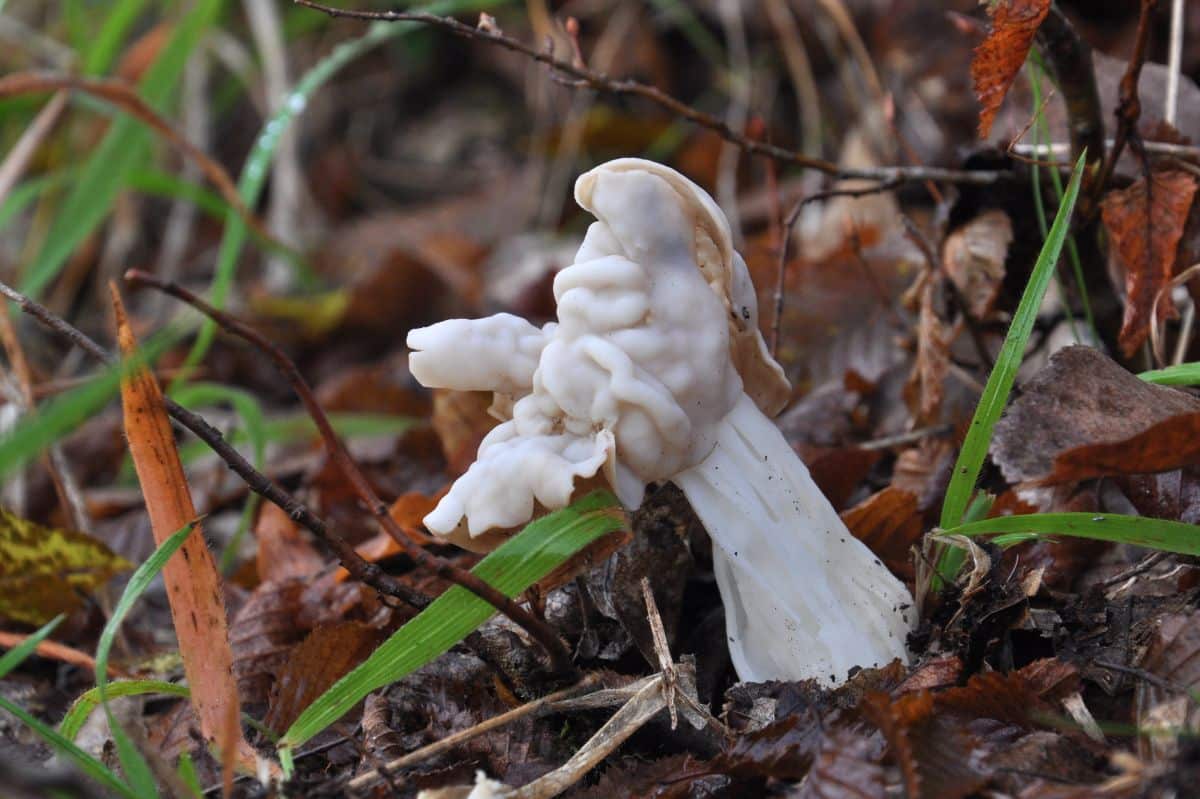
White Elfin Saddle Identification Guide
Season
This mushroom grows in late summer into autumn. Sometimes appears in winter in warmer regions.
Habitat
White elfin saddles grow in groups in deciduous or conifer forests and on the edges of open areas. It more often emerges from the ground but will also grow from humid hardwoods (not high-resin ones). They’re commonly found growing along hedges, pathways, and meadows.
Elfin saddles may appear singularly but more often appear in dense clusters or groupings on the forest floor.
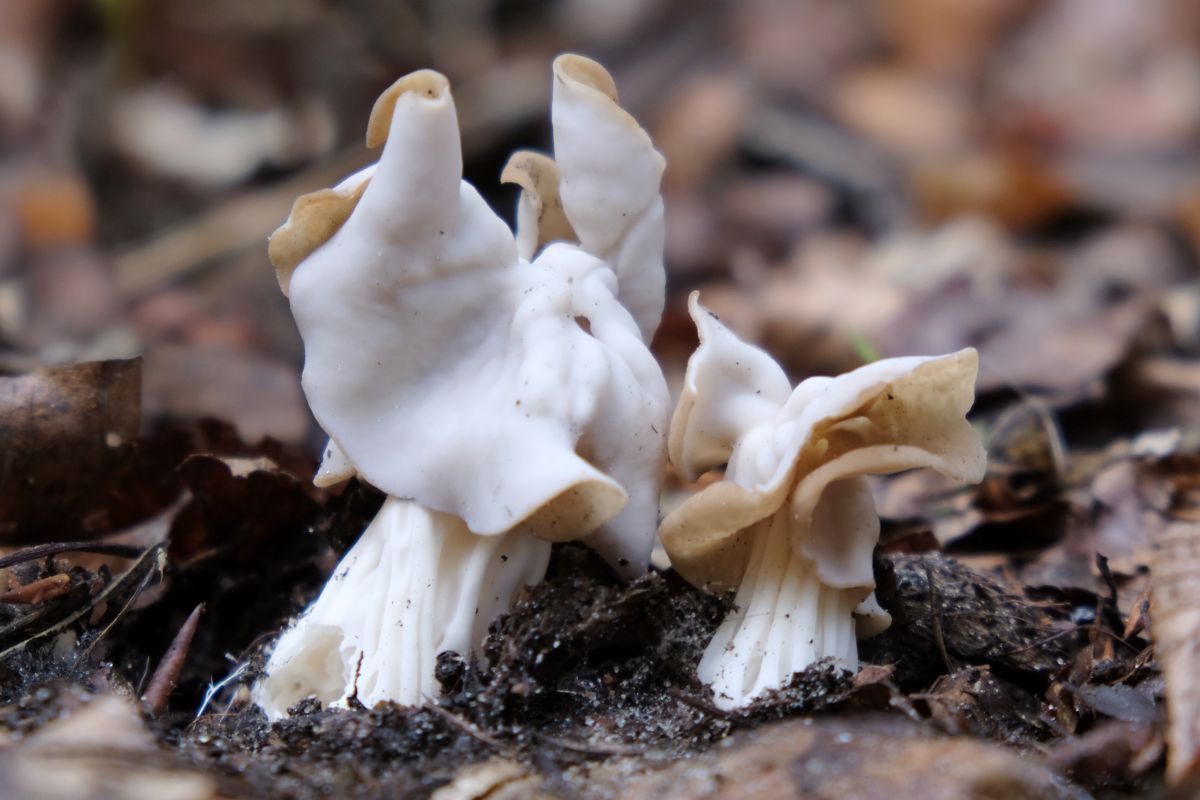
Identification
The cap of the white elfin saddle is, surprise, saddle-shaped! It has a smooth, creamy-white surface that is often wrinkled or folded. The stem is thin and white, and it tapers towards the base. The underside of the cap has a series of ridges or folds, which can be mistaken for gills. This mushroom is pretty easily distinguishable by its bright white coloring and bizarre shape.
Cap
The white cap is wide and saddle-shaped or irregularly lobed. Its surface might be smooth and bald or lightly wrinkled and averages 1-2 inches in diameter. The caps tend to have a broad base with several extensions folded over around it. The extensions are often wavy, bumpy, folded, or curled downwards. The underside of the cap is very finely fuzzy, which you may need a magnifying glass to really see. The cap does not attach to the stem where they meet.
Stem
White elfin saddle stems are impressive in size and decoration. They’re robust, a white or pinkish color, and densely ribbed. This ribbing, or fluting, is ornate and really stands out, especially since the stem is so long compared to the cap size. The stem averages 1 1/4 – 4 inches long.
Flesh and Odor
The flesh of the white elfin saddle is very thin and brittle. It is white and does not change color when cut. There is no distinctive scent.
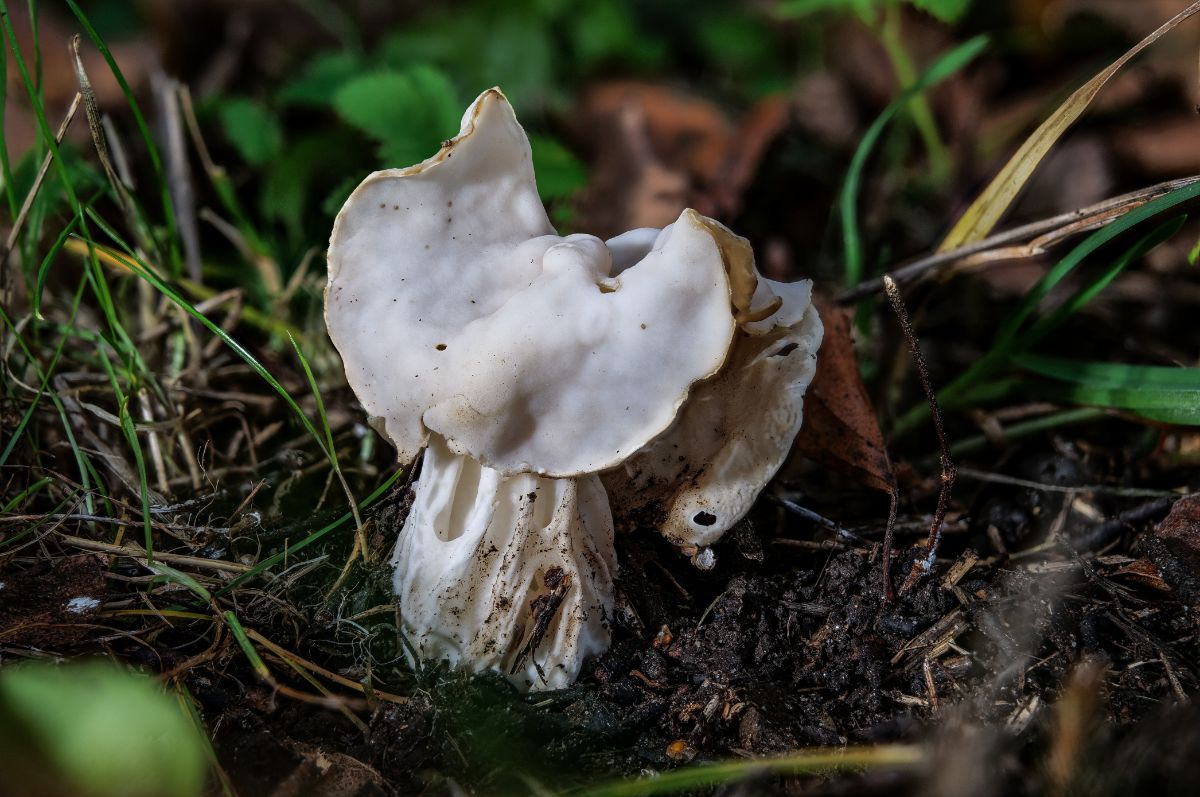
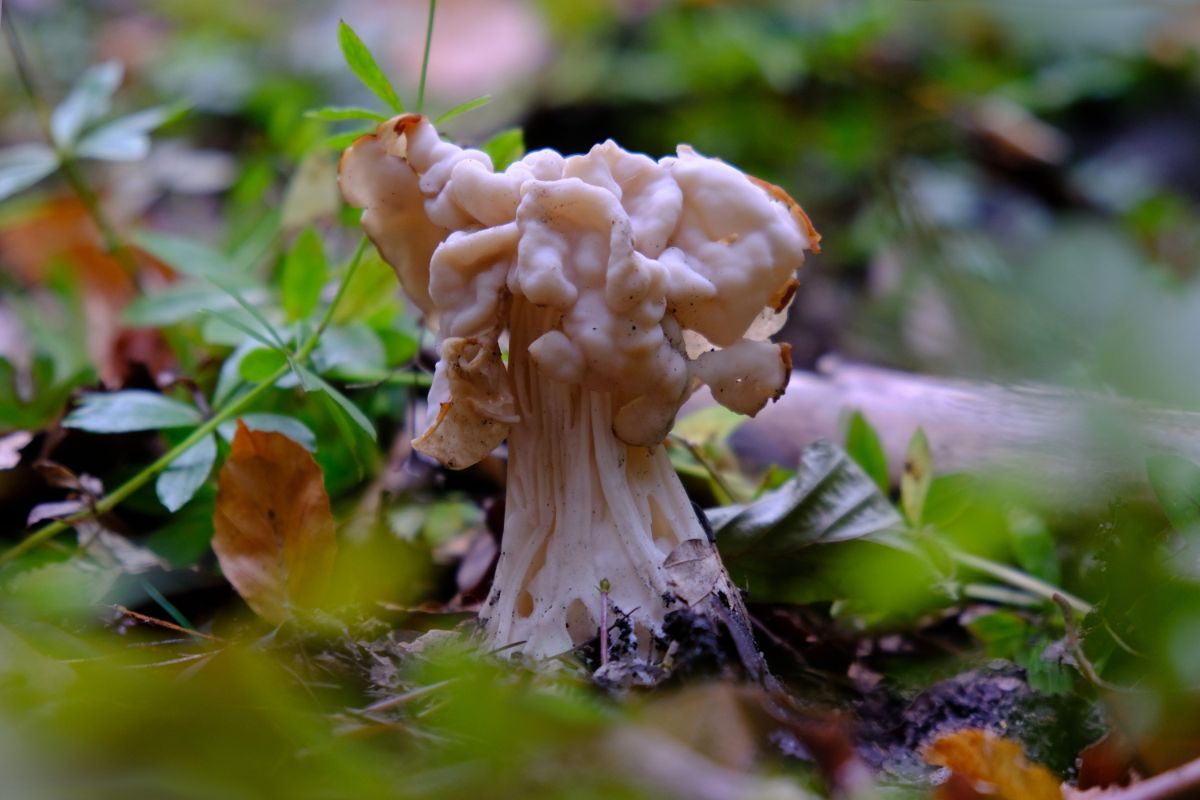
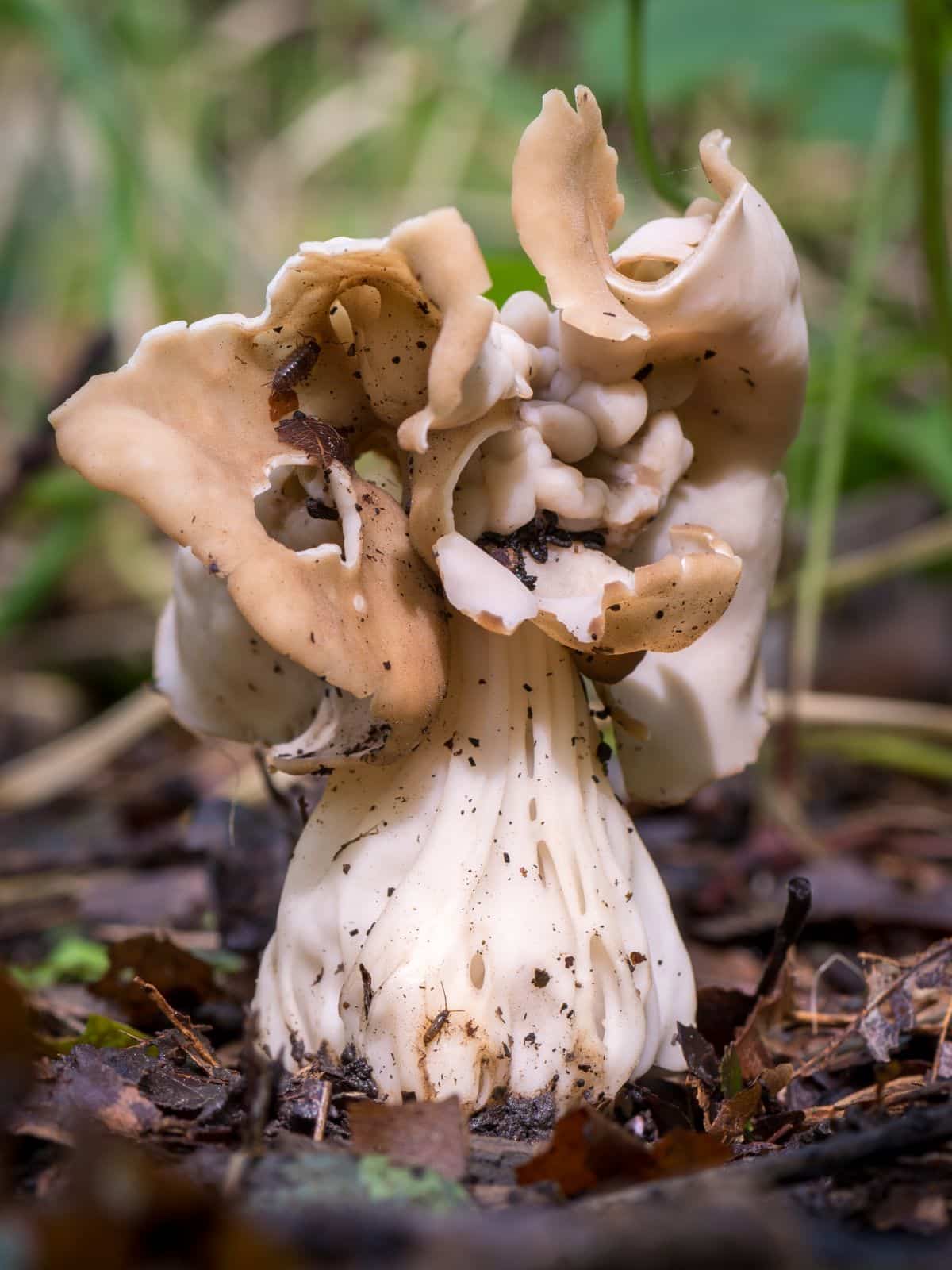
White Elfin Saddle Lookalikes
Black Elfin Saddle (Helvella lacunosa)
“Normal” versions of the black elfin saddle won’t be mistaken due to their dark gray coloring. However, sometimes the black elfin saddle appears with a white cap, which is just confusing. Check the undersurface of the cap – if it is finely fuzzy, it is the white elfin saddle. If it is not fuzzy, it’s the black elfin saddle.
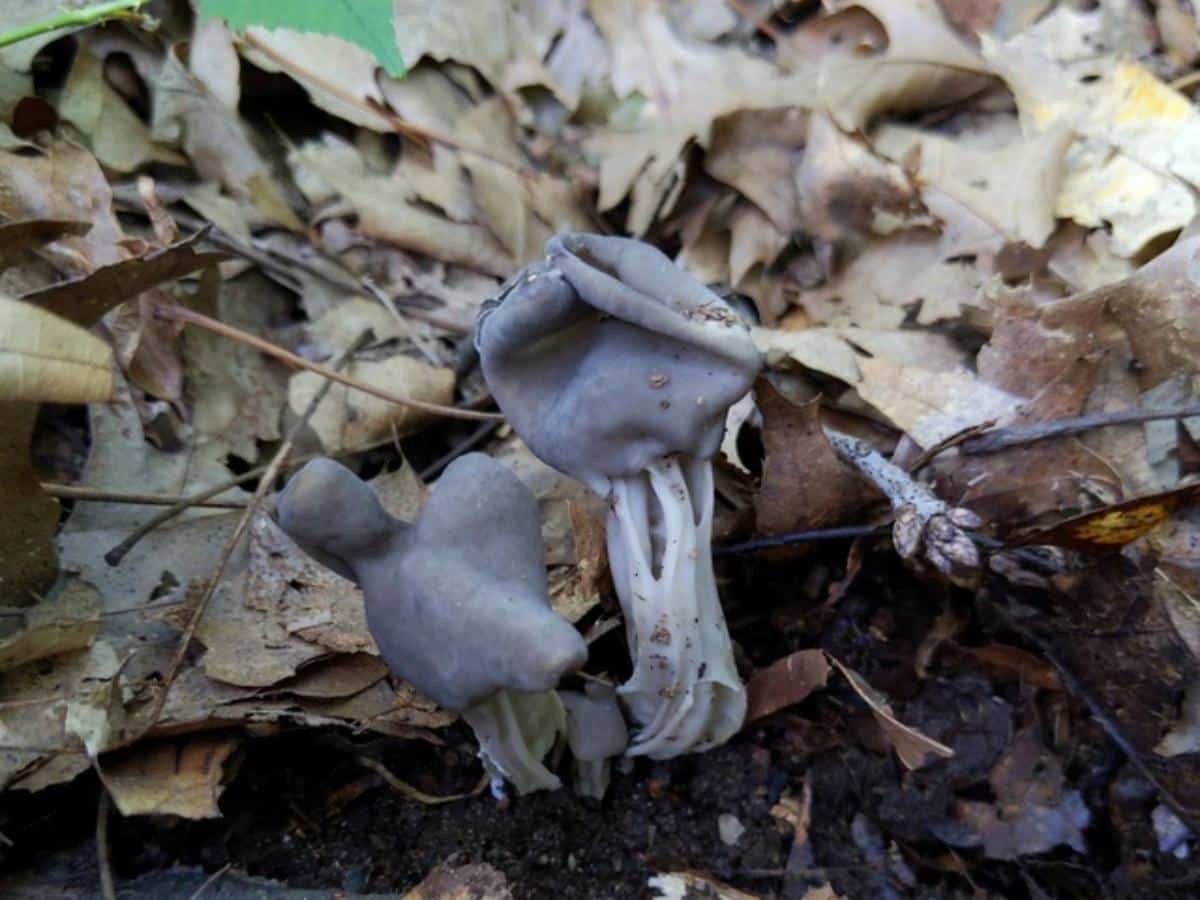
Cooking with White Saddles
The white elfin saddle is edible, with cautions. It is important to note that the white saddle should always be cooked before consumption. This is because raw elfin saddles contain a toxic substance called gyromitrin, which can cause serious health problems. Never eat this mushroom raw. Cooking the mushroom breaks down the toxin, making it safe to eat, but you have to prepare it properly.
If you do decide to eat white elfin saddles, please follow carefully the instructions from Forager Chef in preparing false morels. The white elfin saddle and false morel contain the same toxin and potential issues. Remember, it is your responsibility for your own choices and decision to eat this mushroom. We are not recommending or advocating you eat this species, only providing information if you choose to do so.
The mushroom has a delicate and slightly nutty flavor, which makes it a popular ingredient in many cuisines. It is often used in sauces, soups, stews, and sautés, and it pairs well with other mild flavors such as chicken, fish, and vegetables. The mushroom can be sliced or chopped and added to dishes, or it can be left whole and used as a garnish.
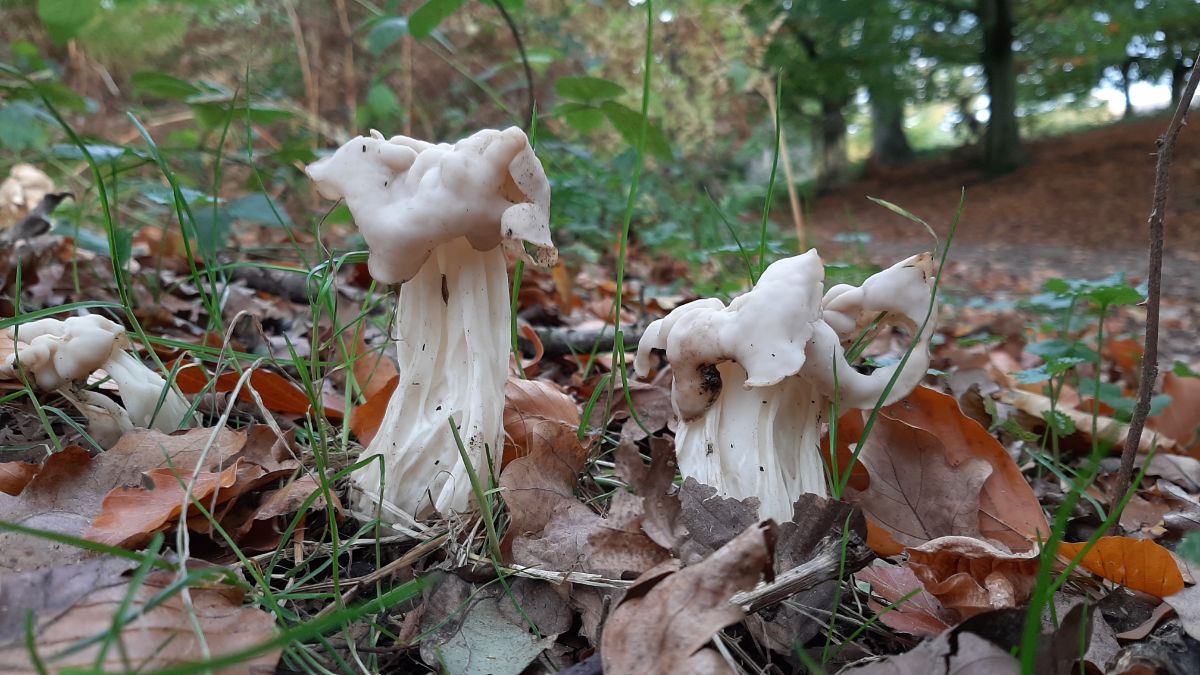
Medicinal Properties of Helvella Crispa
The white elfin saddle has a long history of use in traditional medicine. In Chinese medicine, it is known as Bai Ji, and it has been used to treat respiratory infections, fever, and inflammation. In Europe, it was used to treat rheumatism and gout, and it was believed to have anti-tumor properties. Native American tribes used the white saddle to treat colds, flu, and other respiratory ailments.
The active compounds in the white elfin saddle are still being studied, but early research suggests they may have significant health benefits. However, it is important to note that the white saddle should never be used as a substitute for conventional medical treatment. Always consult with a healthcare professional before using any natural remedies.
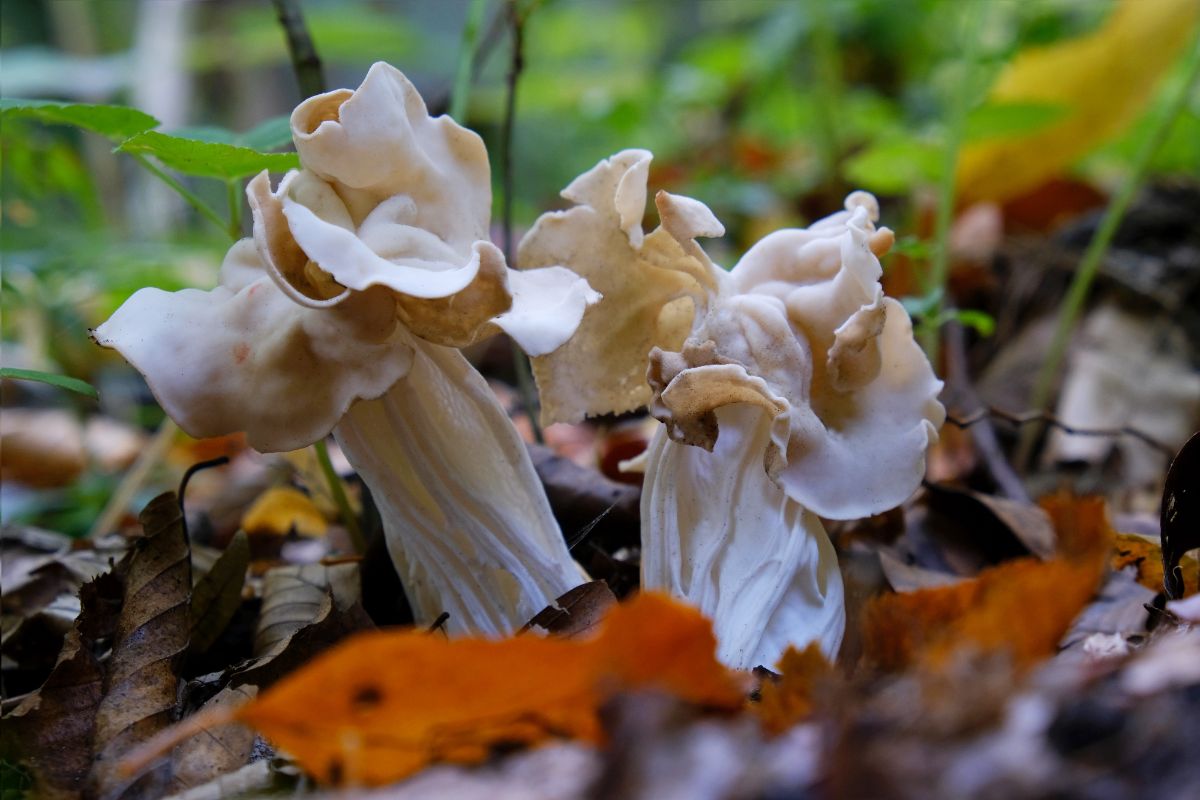
White Elfin Saddle Common Questions
Is white saddle mushroom edible?
Field guides that discuss edibility usually say that Helvella crispa is ‘edible but of poor quality’. However, White Saddles can cause stomach upsets unless very thoroughly cooked, so they must be prepared properly. And the, at that point when they’ve been prepared for edibility, they tend to lack both texture and taste.
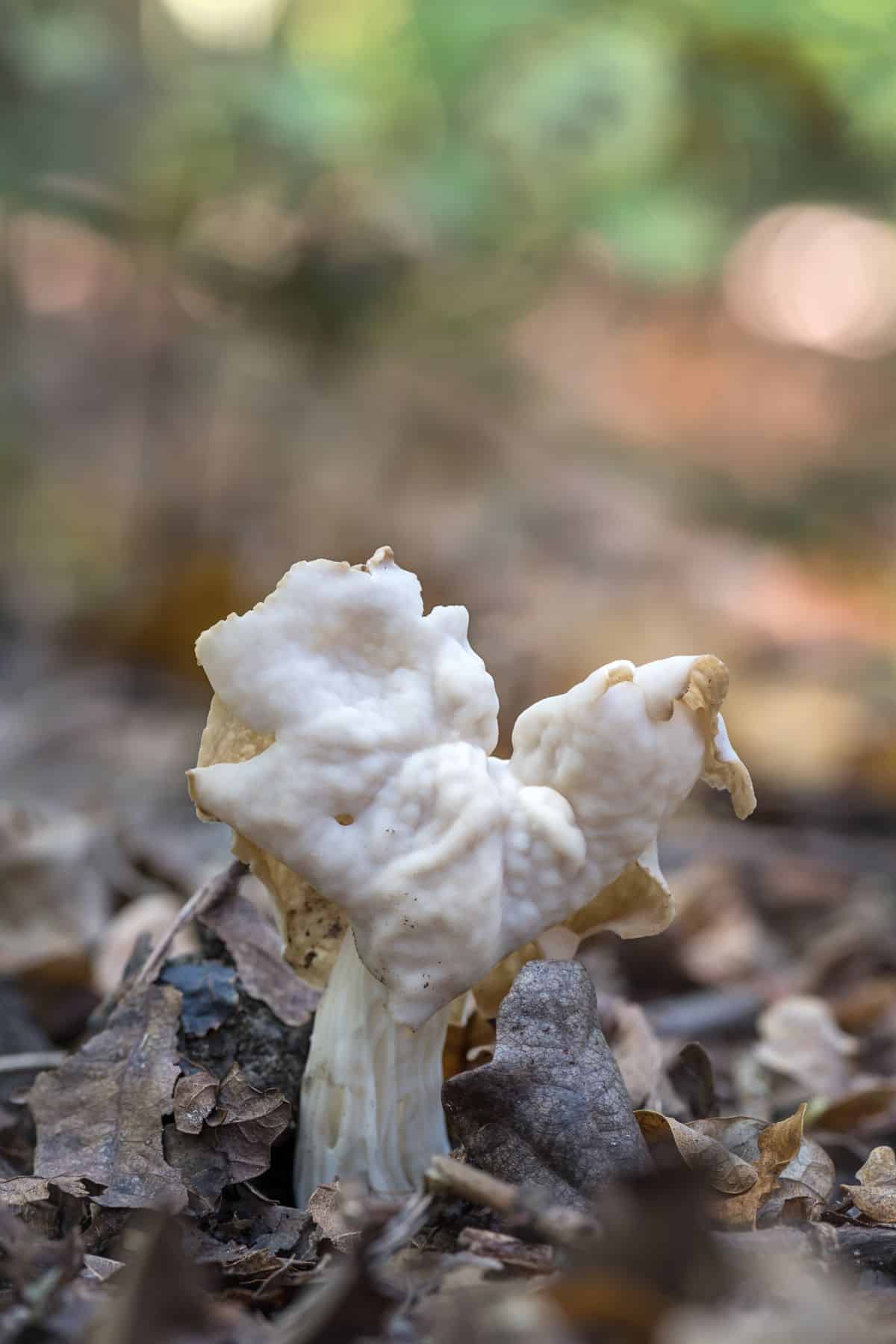





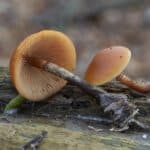
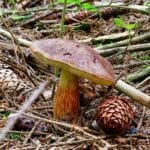
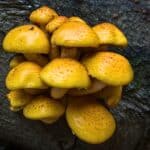
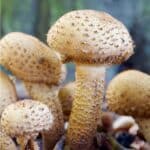
Leave a Reply